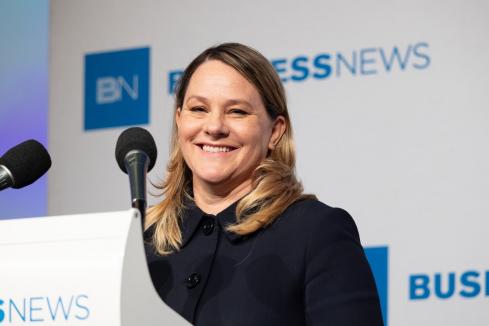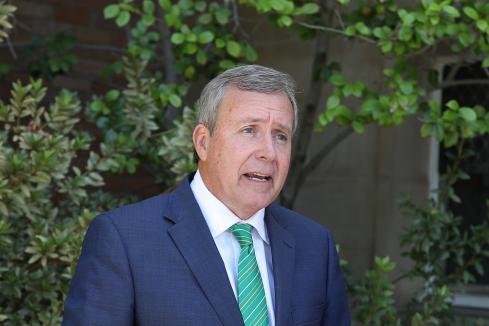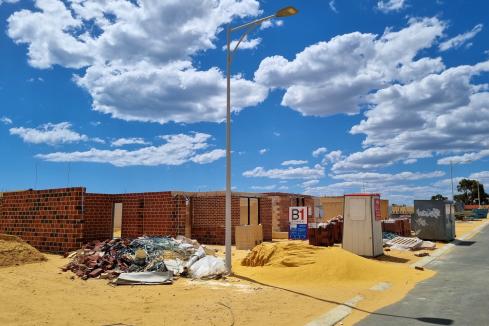The growing skills shortage is forcing more and more WA employers to look overseas to secure skilled workers.


The growing skills shortage is forcing more and more WA employers to look overseas to secure skilled workers.
THE strength of the resources sector has clearly been the principal driver behind the growth of the state’s economy for the past decade.
However, with about $210 billion worth of resources and infrastructure projects either committed or in the pipeline, continued growth is making it increasingly difficult for many industries to fill employment vacancies.
The Chamber of Commerce and Industry WA was among the first to highlight the looming worker shortfall, suggesting that with the current rate of population growth, more than 488,000 workers will be required by 2020.
Of that figure, only 275,000 workers would be provided through natural population growth and migration, indicating a deficit of more than 200,000 workers by 2020.
However, the challenge of meeting WA’s labour needs is not only securing this number of workers, but also ensuring an adequate skills mix.
An increase in employment during the past year has led to a re-emergence of shortages in a range of professional, trade and technical occupations.
In past year, the unemployment rate in WA has been among the lowest in Australia, at 4.2 per cent.
In addition, data from the Department of Education, Employment and Workplace Relations (DEEWR) has shown that the proportion of vacancies for professionals that were filled in 2010-11 decreased by 7 per cent from the previous year.
While many of WA’s industries continue to be affected by a lack of skilled labour, these shortages have become most apparent in the engineering, building and health sectors.
The shortage of engineers has been persistent for at least the past five years, with employers struggling to source suitably experienced professionals, DEEWR’s ‘skills shortages WA’ report said. The report highlighted shortages across the entire sector, with civil, structural, electrical and mechanical engineers in high demand.
While on average there were seven applicants per vacancy in the engineering sector, only one of the seven was deemed suitably experienced for the job concerned.
In addition, the majority of employers indicated they were looking for engineers with at least five years of post-university experience.
Engineers Australia division director for WA, Leanne Hardwicke, said the shortage of skilled engineers was caused by the stagnation in the number of engineering graduates.
“There just aren’t enough children studying maths and science at high school level and they tend to lose interest really around primary school, so we need to increase the number of maths and science teachers that can keep the students interested,” Ms Hardwicke said.
“The increase in infrastructure associated with the mining boom has meant there has been a real increase in the demand for those engineering skills, and WA has been hardest hit out of all the states.”
She said the lack of women in the profession also contributed to the shortage of engineers.
“Only 15 per cent of engineers are women, so if we could get the same amount of women involved in the profession as men, we wouldn’t have a skills shortage,” Ms Hardwicke said.
Local engineering consultancy BG&E has set up a vacation work program to attract top engineering graduates.
BG&E director Peter de Bruin said it was important to invest in young engineers.
“We start with students who look for vacation training, they come and work in our office and if all things go well then we would make them an offer when they finish their studies,” he said.
Unlike the engineering sector, which is faced with skills shortages across the board, WA’s building and construction sector presents a mixed bag.
According to data from DEEWR, employers from the resources sector were experiencing significant difficulty in sourcing building professionals, in particular surveyors and quantity surveyors.
While there appears to be no shortage of trade workers in the building sector, Master Builders of WA director Kim Richardson said he expected problems to arise in this area within 18 to 24 months.
“When both residential and commercial property begin to turn around, which will also be at the time a number of large resource projects like Wheatstone and Pluto are steaming ahead, both are going to require massive numbers of construction workers,” he said.
“And many of the guys are going to be attracted to the major resource projects because of the excellent wage conditions, so we will be struggling in the metropolitan area.”
Mr Richardson said the federal government’s recent decision to extend the term of 457 visas from four to six years was a positive move to promote skilled migration.
“The loosening up of 457 visas to six years is a very worthwhile addition to the resources sector, but providing more incentives for training to attract more people to take up a trade is just as important,” he said.
“The government needs to promote industry and trade training as an attractive option for young people and particularly for their parents, because there is still that cultural cringe from the baby boomer generation that you’ve got to get the university degree.”
The latest survey from Manpower group shows that almost half of WA employers are using foreign talent to supplement their workforces.
DMD Shelving Direct director Mark Antonio has been bringing in staff on 457 visas since 2006.
“We went to the UK, Ireland and South Africa regions for shopfitters, and now 90 per cent of our installation team are on 457 visas,” Mr Antonio said.
“The fact is, if you haven’t got the labour here you haven’t got many other options, so what else are you meant to do?”
Along with the recent amendments to 457 visa conditions, Perth has recently been deemed a regional employment hardship area, which will allow employers to utlilise the Regional Sponsored Migration Scheme.
Mr Antonio said the government should also consider relaxing the rules for holiday working visas.
“I think the holiday working visas could have a little more flexibility in them as well, because they are quite short term,” he said.
“The 457 process is not a long process once you’ve got the application in, but it can be quite difficult when it comes to dotting the ‘i’s’ and crossing the ‘t’s.”
Recent statistics from the Department of Immigration have shown that WA has more than 24,000 457 visa holders, the majority of whom are from Europe and South-East Asia.
While a lot of businesses are using 457 visas, a CCIWA-Commonwealth Bank survey has found 40 per cent of those businesses said the high costs and red tape associated with the 457 program were a deterrent.
St John of God Healthcare chief executive Michael Stanford highlighted the importance of using migration strategies to secure skilled staff in his hospitals.
In particular, he said, there had consistently been a national shortage of midwifes, intensive care nurses and operating theatre nurses.
“We have had to recruit overseas, and we are absolutely sure we will recruit again overseas,” Dr Stanford said.
“Looking forward, we are a bit concerned about 2015; the lift in the economy means people who might have already retired in the mid 50s are going to retire at some stage; in addition Fiona Stanley [hospital] and the Midland Health campus will open and that will also put a lot of pressure on the system.”
To avoid a future shortage of nurses in particular over the next three years, St John of God has invested in a graduate program.
“We have been working extremely hard on increasing the number of undergraduate and post graduate placements so that more and more people can do nursing or allied health in our hospitals,” Dr Stanford said.
“In our program, graduates spend a year at our hospitals and at Murdoch we have a three-year graduate program; if you don’t invest in young graduates they will leave the career.”
















